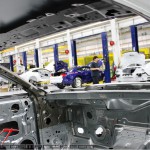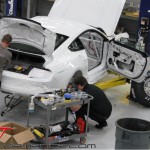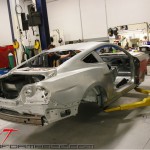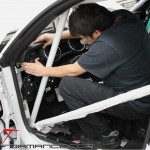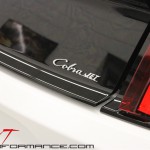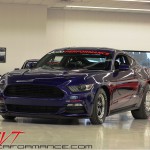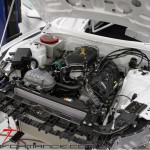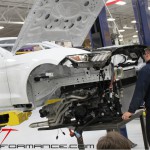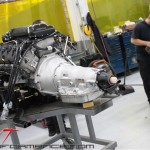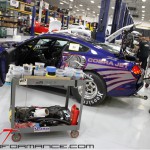Born to be Wild
How Ford Performance builds a factory-engineered, 8-second drag ’Stang
By Steve Turner
Photos courtesy of Ford Performance
Racing season will be here before we know it. Fortunately for the lucky 50 buyers of 2016 Cobra Jets some of those cars are built, while the others will be assembled soon. We recently got a look into the process creating these impressive Ford Performance machines, and it’s a little bit different to accommodate the nuances of the S550 platform.

“We had a couple challenges this time that are new; mostly because the car has an independent rear suspension. Final assembly was at Watson Engineering, which is the same as we did in 2014,†Ford Performance Drag Racing Parts and Competition Manager Jesse Kershaw explained. “The difference this time is in the past the body comes from the plant, would come to Watson, get the roll cage put in it, then back to the plant for paint. Then it was ready for final assembly. For the 2016 model there were some challenges to putting the live axle in the body that didn’t allow us to do all the body modifications before it got painted.â€
Because installing a solid rear axle and a four-link in place of the factory independent rear suspension means removing a lot of the existing structure in the back of the car, that meant a car ready for a solid axle couldn’t travel down the paint line at the Flat Rock Assembly Plant. That resulted in a bit more back and forth between FRAP and Watson Engineering for a new Cobra Jet chassis.

“It is a little bit different because it has this secondary paint process because the plant has these locating fixtures on the body and some of the things we were putting in were in the way or things that we were taking out needed to be there,†Jesse said. “Now the body comes to Watson and the put in about 70 percent of the cage and rearend mounting. Then it goes to the plant for painting and comes back. Watson then has to put in the rest of it and they touch up the paint there at Watson.â€
Once that process is complete the chassis is ready for assembly, and Watson has all the parts in stock to complete the car. All the small parts and the wheels and tires are on site, while the engines and transmissions arrive in batches of five so as not to take up too much space. In all the process takes about 11 business days to go from a chassis to a Cobra Jet. However, before the car is deemed ready for sale it must undergo a rigorous quality control inspection.
“There is an end-of-line inspection where they fire the car up and check for leaks. The various engineers that are responsible for a system sign off on that system. Some Watson representatives also sign off on some of the build quality areas,†Jesse said. “For example, the electrical engineering guy checks the electrical and the calibration guy ensures the car is flashed properly. Only after everything is signed off will it get released to the dealership.â€
You can watch a timelapse of the 2016 CJ build right here…
Once owners receive their new race cars they will not only benefit from a factory-engineered race car, but from the things Ford Performance engineers have learned over the years after previous owners have received their Cobra Jets. Almost any conceivable question can be answered by the car’s expansive manual.

“We have added more and more details to the operations manual. It is over 70 pages. It’s a book. Everything you want to know—every nut, bolt and part number is in there. There is a lot of detail,†Jesse said. “It wasn’t always like that. It started with an eight- or 10-page manual and grew to 35 pages. It was 40 some pages on the 2014 car and now it’s over 70 pages with photos and descriptions.â€
The improved manual is great news for CJ owners, but the better news is that all the 2016 models should be finished in time for racing season.

“We shipped 12 cars last year in 2015 and I want to say we have shipped eight or 10 to date in 2016,†Jesse said. “We plan to have all the cars built by March 1st.â€
That means they should be ready to run in time for the likes of the NMRA’s Cobra Jet Showdown and the exciting new heads-up battle with the COPO and Drag Paks over at the NMCA.
“I’m excited about the NMCA Factory Super Cars class and the feedback I’ve gotten from numerous Cobra Jet racers in the NHRA has been positive. So I’m looking forward to this being a very successful class pitting the three manufacturers against each other,†Jesse added. “I can guarantee there will be a large Ford presence and I am hoping there will be a good constituency from the Chevy and Mopar camps and we can really make a show of it.â€











